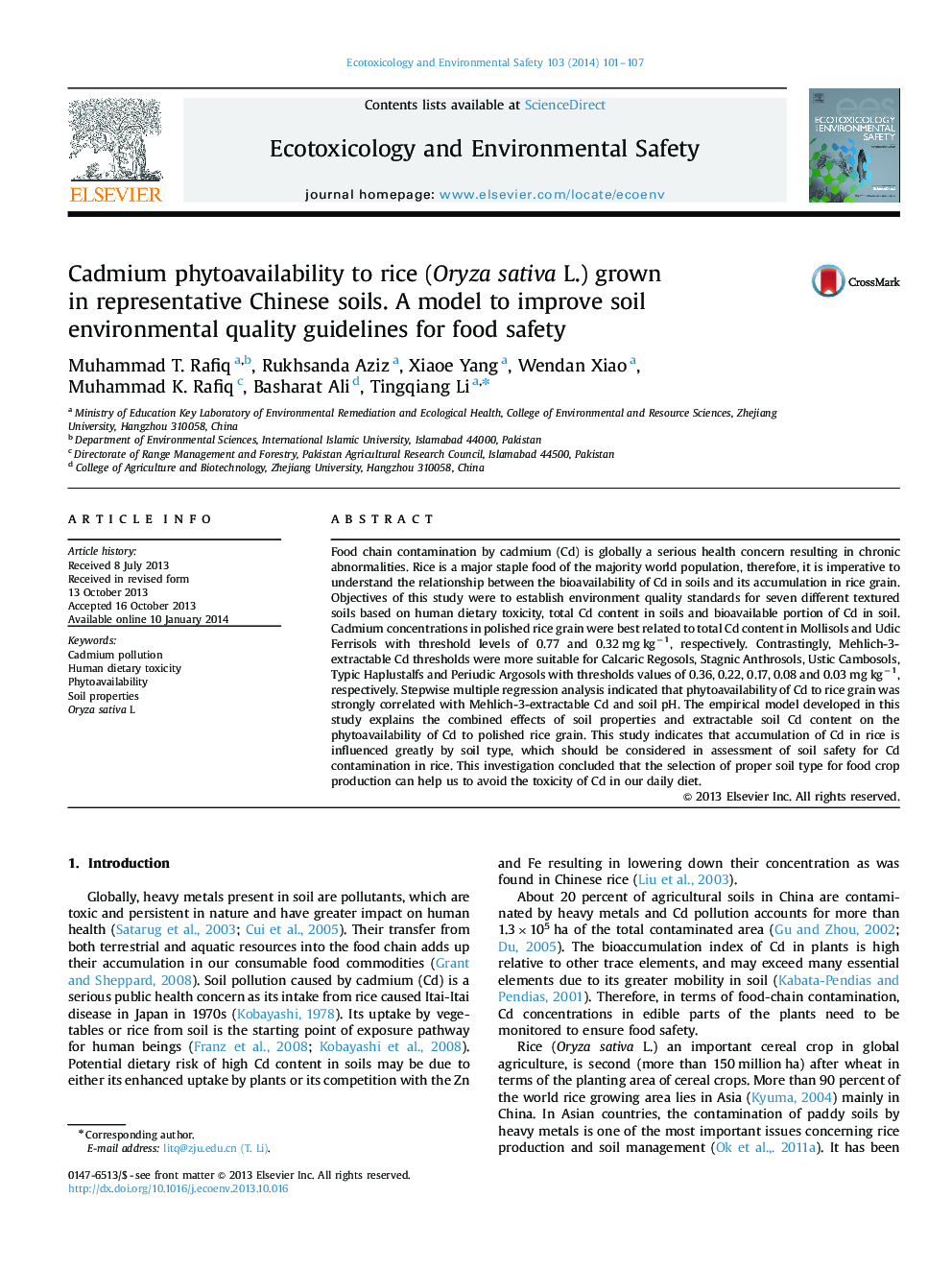| Article ID | Journal | Published Year | Pages | File Type |
|---|---|---|---|---|
| 4420200 | Ecotoxicology and Environmental Safety | 2014 | 7 Pages |
•The empirical model suggested that Cd contents in rice grain were enhanced by higher soil Mehlich-3-extractable Cd content, and lower soil pH.•Established threshold levels for food safety indicated that Cd contents in rice grain were best related to Mehlich-3-extractable Cd contents in most soils.•Dry biomass of rice decreased under Cd toxicity in all soils.
Food chain contamination by cadmium (Cd) is globally a serious health concern resulting in chronic abnormalities. Rice is a major staple food of the majority world population, therefore, it is imperative to understand the relationship between the bioavailability of Cd in soils and its accumulation in rice grain. Objectives of this study were to establish environment quality standards for seven different textured soils based on human dietary toxicity, total Cd content in soils and bioavailable portion of Cd in soil. Cadmium concentrations in polished rice grain were best related to total Cd content in Mollisols and Udic Ferrisols with threshold levels of 0.77 and 0.32 mg kg−1, respectively. Contrastingly, Mehlich-3-extractable Cd thresholds were more suitable for Calcaric Regosols, Stagnic Anthrosols, Ustic Cambosols, Typic Haplustalfs and Periudic Argosols with thresholds values of 0.36, 0.22, 0.17, 0.08 and 0.03 mg kg−1, respectively. Stepwise multiple regression analysis indicated that phytoavailability of Cd to rice grain was strongly correlated with Mehlich-3-extractable Cd and soil pH. The empirical model developed in this study explains the combined effects of soil properties and extractable soil Cd content on the phytoavailability of Cd to polished rice grain. This study indicates that accumulation of Cd in rice is influenced greatly by soil type, which should be considered in assessment of soil safety for Cd contamination in rice. This investigation concluded that the selection of proper soil type for food crop production can help us to avoid the toxicity of Cd in our daily diet.
